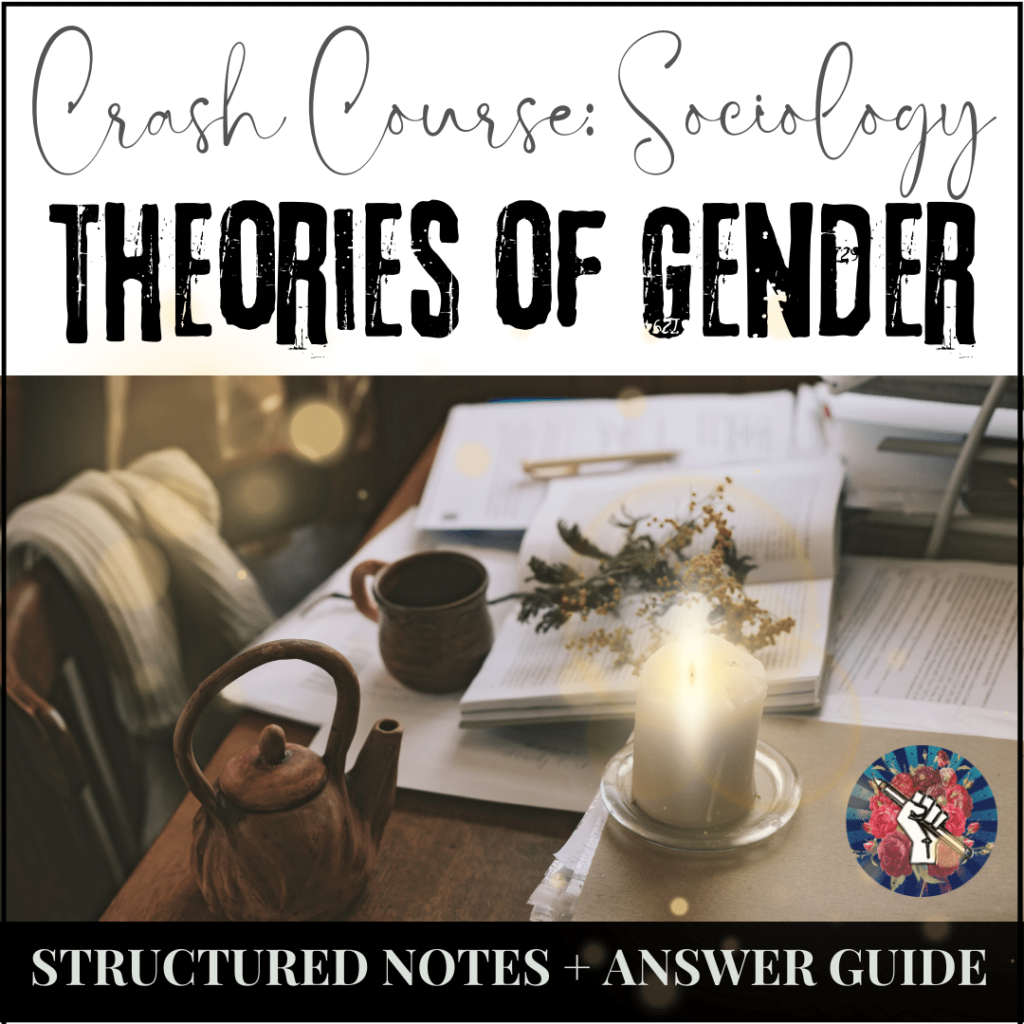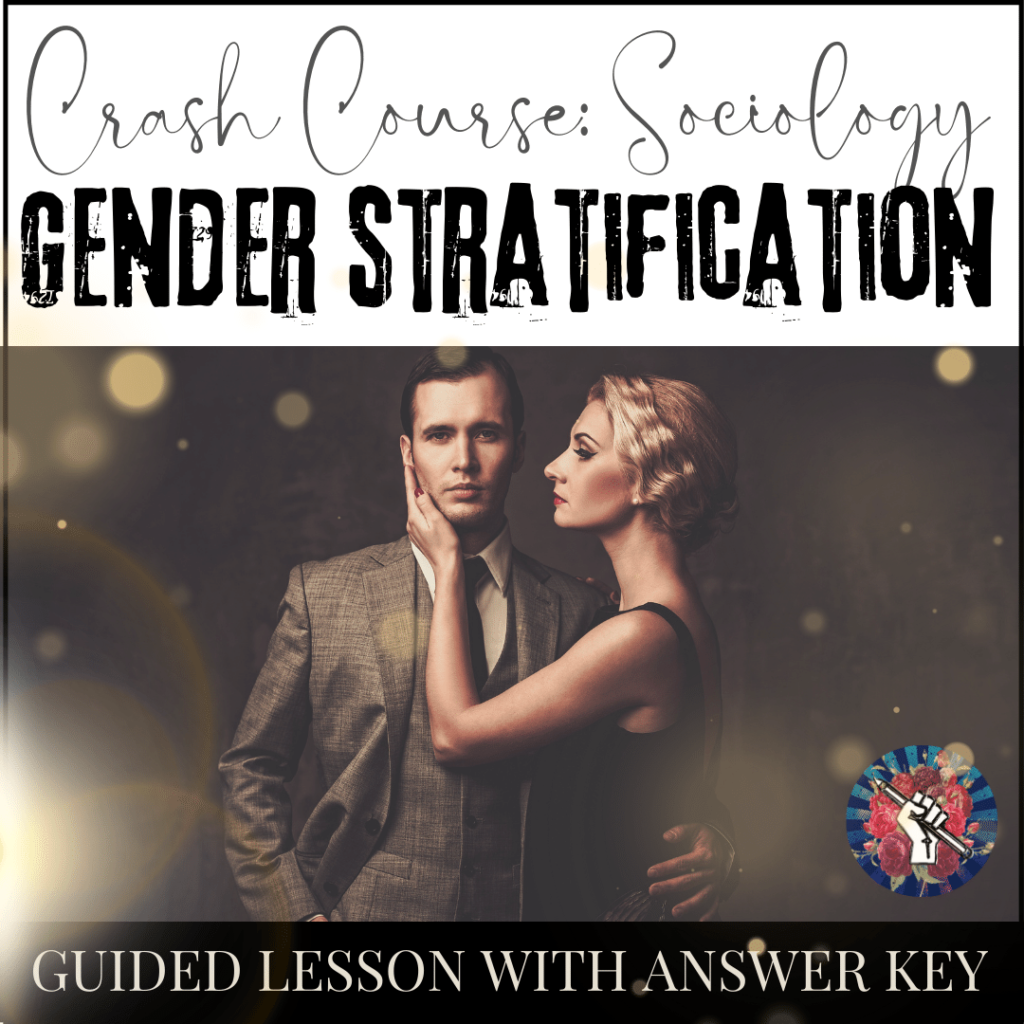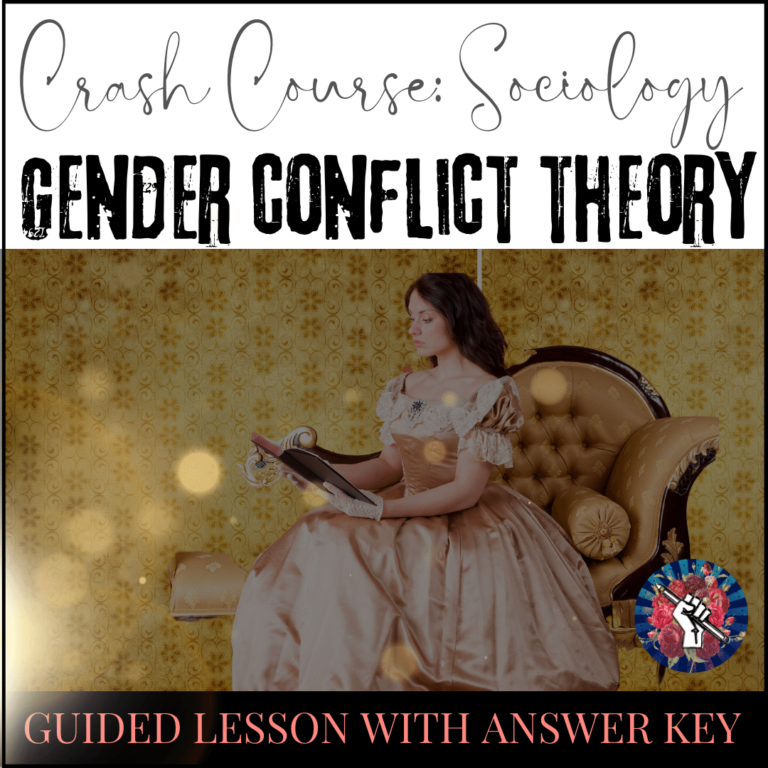To teach gender equality in the classroom, why not go straight for the jugular and unpack the language of gender being used today… but with the help of sociology!
I wish there had been the option of the Crash Course series when I was a student. Or YouTube….. Or Google.
Alas.
Thankfully, now students do not have to be constricted by the limitations of where they are in their learning journey. Of course, in this age of information, there are no barriers to whom is disseminating information to our young people or how they synthesize it, so I’m not sure they are necessarily better off? But the folks at Crash Course have definitely done a public service by creating their videos, and it would just be silly for us as educators to squander the opportunities they have forged for us.
Anyway. Back to gender and gender roles and language of gender.
Have your students ever stopped to question why society assigns certain behaviors and traits to men and women?
Of course they have. I mean… some of them have. At least, the ones who don’t benefit from gender regimes have. If they haven’t questioned it, its because they aren’t paying attention. If they aren’t paying attention… its because the structures work for them.
Gender roles have obviously been a pervasive aspect of our culture for centuries, shaping our understanding of what it means to be male or female. When students delve into the sociological perspective of gender roles and develop an understanding of why and how are gender roles reinforced in society, they will come to realize for themselves that absolutely nothing about gender is innate or natural, but socially constructed through space and time…
…which means, essentially, that its ALL MADE UP!
But of course, its also very real.
But definitely, 100% made-up.
I can see how this could be confusing.
For example, how can a person be gender non-conforming if there is no such thing as a strict binary in gender, only the performance of gender?
Social Constructionism
Socially constructed” refers to social constructionism, the study of how social groups, identity categories, and yes, even things that seem like objective biological facts, are actually systems of meaning that were built, have been maintained, and protected from criticism by the very social systems by which they were created.
How are Gender Roles Reinforced in Society?
These mercurial and completely made-up social scripts/gender roles are produced (and, subsequently, re-produced) by the various cultural institutions that make up our lives: education, religious hierarchies, the legal system, the theater that is our medical system, and so on and so forth.
However, it’s important to note that just because something is “socially constructed” (read: made-up), doesn’t make it meaningless or powerless.
For example, money.
Money is completely made up; really it’s printed pieces of paper, tiny flat circular metal trinkets with funny images on them, or abstract numbers in a computer system. It only exists and has value because we have collectively decided it does. The fact that money is an imaginary abstraction doesn’t make the human experiences resulting in this collective belief less real. Same with sex and gender.
This is why I think it is one of the most powerful things we can do as educators to challenge these completely made-up binaries.
The Crash Course: Sociology videos with delightful host Nicole Sweeney provide bite-sized, friendly, manageable introductions to various concepts surrounding the study of gender that will equip students with the tools to delve further into how and why it has all just been made up.
The Sociological Perspective on Gender Roles
From a sociological perspective, gender roles are viewed as a result of socialization rather than biological determinism.
The concept of gender roles is a way for society to categorize and define expectations for individuals based on their sex. Sociologists argue that these roles are not fixed or natural, but are shaped by historical, cultural, and social factors.
Gender roles can be deeply ingrained in societal norms and institutions, leading to the perpetuation of gender inequality.
Patriarchy, a social system in which men hold the majority of power and influence, further reinforces traditional gender roles and prevents women from achieving full equality.
Furthermore, gender roles intersect with other forms of social stratification, such as race and class, creating even greater barriers for marginalized groups. For example, women of color may face both sexism and racism, leading to unique challenges and experiences.
Theories of Gender
In this Crash Course Sociology video #33 “Theory of Gender,” host Nicole Sweeney leads us through an exploration of the concept of gender and its relationship to social theory. Overall, the video provides a comprehensive overview of the theoretical perspectives on gender and the social and cultural factors that shape gender roles and expectations. I think its important to note that Sweeney and this video series provides a sociological approach to gender, which can be useful (and of course fascinating), but can also be very overwhelming to students who have never been exposed to theory before.
Gender Stratification and Its Effects on Society
Gender stratification is a social phenomenon that refers to the unequal distribution of power, resources, and opportunities between men and women. This imbalance is perpetuated by societal norms and expectations surrounding gender roles, leading to a self-fulfilling cycle of inequality.
Gender stratification is not limited to gender alone but is also intersected with other forms of social stratification, such as race, class, and sexuality. It is a key concept in sociology that has a significant impact on our society, including education, employment, politics, and family life.
The effects of gender stratification on society are immense, with women often bearing the brunt of its negative consequences. For instance, women are more likely to experience poverty, occupational segregation, and limited access to education and healthcare.
Gender Stratification
In this CC Sociology video, our ever-delightful host, Nicole Sweeney, guides us through how society becomes stratified along gender lines. It provides a preliminary overview of gender stratification, including its causes, effects, and potential solutions.
This video can be a valuable resource for high school social studies teachers to introduce students to these concepts. It discusses various strategies for addressing gender inequality, such as challenging gender stereotypes, promoting gender diversity, and advocating for policy changes like pay transparency and parental leave.
Gender Conflict Theory and Its Implications
Conflict theory and gender, or Gender Conflict Theory, posits that not only is gender a social construct but also a site of conflict: that men and women are engaged in a power struggle, with men traditionally holding more power and privilege in society.
For instance, women’s lower status in the economy often puts them at a disadvantage in terms of pay and promotions in comparison to their male counterparts. This power imbalance is reinforced by societal norms and values that limit women’s choices and opportunities, such as the expectation that women prioritize family over career.
Gender conflict theory also suggests that gender is not limited to individual experience but rather a product of larger social structures. These perpetuate gender inequality and reinforce gender norms, which further reinforce gender-based power differentials. This reinforcement of gender roles is often enforced through socialization, education, and media, creating a vicious cycle of gender-based violence.
The implications of gender conflict theory are that gender equality is not simply a matter of changing individual attitudes but rather involves fundamental changes to societal structures. By acknowledging the structural inequalities that underpin gender-based violence and inequality, it becomes possible to address them more effectively.
Harriet Martineau and Gender Conflict Theory
This guided lesson for the Crash Course Sociology video #8: Harriet Martineau and Gender Conflict Theory, is a valuable resource for high school social studies teachers looking to introduce students to the complex topic of gender and conflict theory. It could also serve as an introduction of gender inequality in the US, including: how many feminist waves are there, teaching women’s suffrage, or even an introduction to teaching feminist theory.
The Influence of Sexuality on Gender Roles
Research in sociology shows that gender roles are not solely influenced by biological sex, but also by one’s sexual orientation.
Studies have found that lesbian, gay, bisexual, and transgender (LGBT) individuals may experience unique gender role expectations based on their sexuality. For example, heterosexual couples often conform to traditional gender roles, with men taking on the role of the provider and women taking on domestic responsibilities. However, same-sex couples do not have the same gendered expectations, and often divide responsibilities based on individual preferences rather than traditional gender roles.
Gender and Sexuality
This resource provides you with pre-viewing discussion prompts that will activate prior knowledge and provide context for watching the video, highly detailed structured notes to support their viewing of the video, and post-viewing discussion questions to further student understanding of concepts introduced in Crash Course Sociology’s Sex and Sexuality video #31.
Sexuality plays an important role in shaping gender roles, but is distinct from them. As society becomes more educated regarding the many sexualities, genders, and ways to be human, the hope is that it will become less contested and incrementally safer for everyone to exist as they are.
If nothing else, students need to understand that gender roles, gender identities, gender norms, gender anything are not innate but rather social constructs that have evolved over time, and will continue to do so.
Through an introductory analysis of gender stratification, gender conflict theory, and sexuality, it becomes clear that societal norms and expectations play a significant role in shaping our understanding of gender.
Further questions for critical thinking about gender roles

The big questions, the ones that these videos don’t answer but that I think can be helpful to structure your larger discussions around, are:
Who benefits from our collective belief in and adherence to these roles?
What is the usefulness of genders, sexes, or sexualities as categories?

















